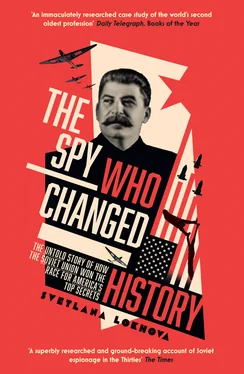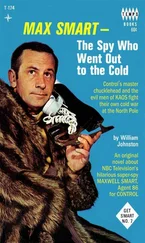The administration estimated that any recession resulting from the crash would be shallow, like the one the United States had experienced after the Great War. Despite the high drama, the conservative President Hoover believed that ‘anything can make or break a market … from the failure of a bank to the rumor that your second cousin’s grandmother has a cold’. 4He and his laissez-faire economist advisors thought it was just a small setback and the market would soon bounce back. It didn’t. Publicly, Hoover continually downplayed the nation’s agony, retreating into his dogmatic shell and refusing to act. At this most difficult time, he offered his wounded people no leadership. In the face of the suffering and bewilderment, the White House appeared distant and unmoving.
Throughout the crisis, Hoover would display terrible judgement. One of his most passionate causes was to deny combat veterans an increase in their benefits. When it came to providing depression relief, he insisted that private charity, not state aid, funnelled through the Red Cross was sufficient. He went further, expressing the belief that charity was the sole answer to the enormous and growing needs of America’s army of unemployed and starving. He kept up this line even when nature added to the misery, a severe drought creating a dust bowl in the Great Plains region. In a White House press interview Hoover displayed shocking callousness towards his fellow citizens. ‘Nobody is starving,’ the President blithely asserted . ‘The hoboes are better fed than they ever were before.’ 5New York City alone reported ninety-five cases of death by starvation that year.
Describing the start of the Great Depression as merely public hysteria, Hoover declared that ‘what the country needs is a real big laugh. If someone could get off a good joke every ten days, I think our troubles would be over in two months.’ 6 Far from being gripped by laughter, waves of bank runs began in New York City and spread panic around the country. In fear customers flooded into their banks to take out their savings. The banks didn’t have any cash; no one did. By 1931 it became evident that many banks were going out of business. In December, the Bank of the United States in New York collapsed, having at one stage held more than $210 million in customer deposits. It was a tipping point, and within the next month 300 other banks failed. By April 1932, more than 750,000 people in New York alone were on some form of welfare and a further 160,000 were on the waiting list. In desperation, crowds of unemployed men took to wandering the streets wearing signs showcasing their skills in an attempt to find work.
• • •
Klivans gave a series of detailed, teasing interviews to the newspapers about some of her experiences during her ten months teaching English in Russia. Amid the chaos, she sat on an upholstered chair in her parents’ elegant drawing room wearing an evening gown for the first time since she had left Youngstown society life to venture into the heart of the Soviet Union. One journalist asked the burning question:
it’s raining outside; you are alone in the house, lonely. At the door stand two young men, one Russian, a senior of Moscow University; the other is a Harvard senior. Which would you prefer as company for the evening?’ Klivans replied, ‘I’d prefer the Russian because he is more mature, more intelligent, not so flippant and doesn’t neck. Necking is not a national pastime in Russia. Sex is delegated to secondary importance. Work comes first, then sex. What is immoral in America is moral in Russia.’ 7
A mildly irritated Klivans knew the exact lines to prick the journalist’s interest: ‘Russians can’t understand America’s exploitation of sex.’ While in Moscow she had shared with her class pictures from American periodicals of bathing beauties in toothpaste and mouthwash adverts. The reaction was merely raised Russian eyebrows and quizzical smiles. She announced that Soviet society had developed very progressive answers to America’s fixations with sex, drinking, divorce and religion. None of the curses of American life existed in the Soviet Union, she believed, and unlike America, there was practically no graft in government. She had found there to be few courts to speak of, no instalment credit plans and few automobiles. Divorce rates had soared in the US during the economic crisis as the strain of unemployment took a vicious toll on relationships, and the busy divorce lawyers were reviled; in the Soviet Union, she believed, divorce and other lawyers were unknown. Klivans spoke of the very different ideas towards love and marriage found in the Soviet Union, where it was now the case that ‘whether registered or not the marriage is legal, and the parties can separate permanently without any more ado about it. No five day waiting is required when a Russian wants to get married. He just goes ahead and gets married. If he likes, he can register the marriage, and this means that if he leaves her their property will be equally distributed.’ 8
Some American scaremongers peddled the myth that Communism was synonymous with an amoral society. In Klivans’s view, it was American society, whose members had sex in cars, which was promiscuous, and not the atheist Russians. Cars in Russia were few in number and used exclusively for work. It was freedom-loving Americans, she continued, who had to be deprived of alcohol by their own government’s prohibition laws. America’s deprived drinkers would be jealous of the Russians, who took their daily drinking quite seriously. And yet, despite the ready availability of alcohol, there were in her experience few real drunkards in evidence on the streets of Moscow or Leningrad. Wine and beer were the favoured tipples. Seemingly Russians could be trusted to behave themselves responsibly with alcohol, whereas Americans could not. Moreover, she believed that religion was not prohibited in Russia, although as a result of pressure brought to bear on those who attended worship most Russians did not attend church. Overall she challenged the alarmist conservative view that a lack of religious training in Russia had lowered the moral standard of the country .
Painting a picture of a society with difficult economic problems but one that had embarked on an exciting journey to a much better future, she confirmed to readers that despite the advantages of some aspects of the Communist system, there were extreme shortages of the basics in the Soviet Union. ‘One cannot buy the most trivial thing in Russia such as knives, scissors, screwdrivers, thumb tacks and the thousand and one other things that are so common in our five and ten cent store. An American five and ten cent store transplanted to Russia would probably give the Russians the impression that the millennium had arrived.’ 9But Klivans was a convert, as she had found living in Russia had given her a tremendous feeling of stimulation at being part of an energetic society where everyone worked for a definite purpose. She would get her wish to go back to what she described as ‘the most exciting place on the globe’. She was not alone. Many fellow left-leaning US thinkers had already made similar pilgrimages to Moscow.
A highly perceptive observer, Klivans could have been an excellent US intelligence asset. She certainly was an important Soviet one, through her work passing on to her charges her observations on American life. She had learned during her stay exactly what was going on in the USSR. Her close friendships with her students had given her invaluable information. Her sources were impeccable, as her engineering students were at the heart of every aspect of the first Five-Year Plan. And her analysis of the state of Soviet economic development was correct. She told America the unvarnished truth that in the mind of the Russians Henry Ford was the greatest American and that they were trying to model Soviet industry on his methods. It was her view, however, that using the Ford method without Ford himself to direct them might not lead to success. She explained the importance of the mission in America her charges were about to be sent on:
Читать дальше












